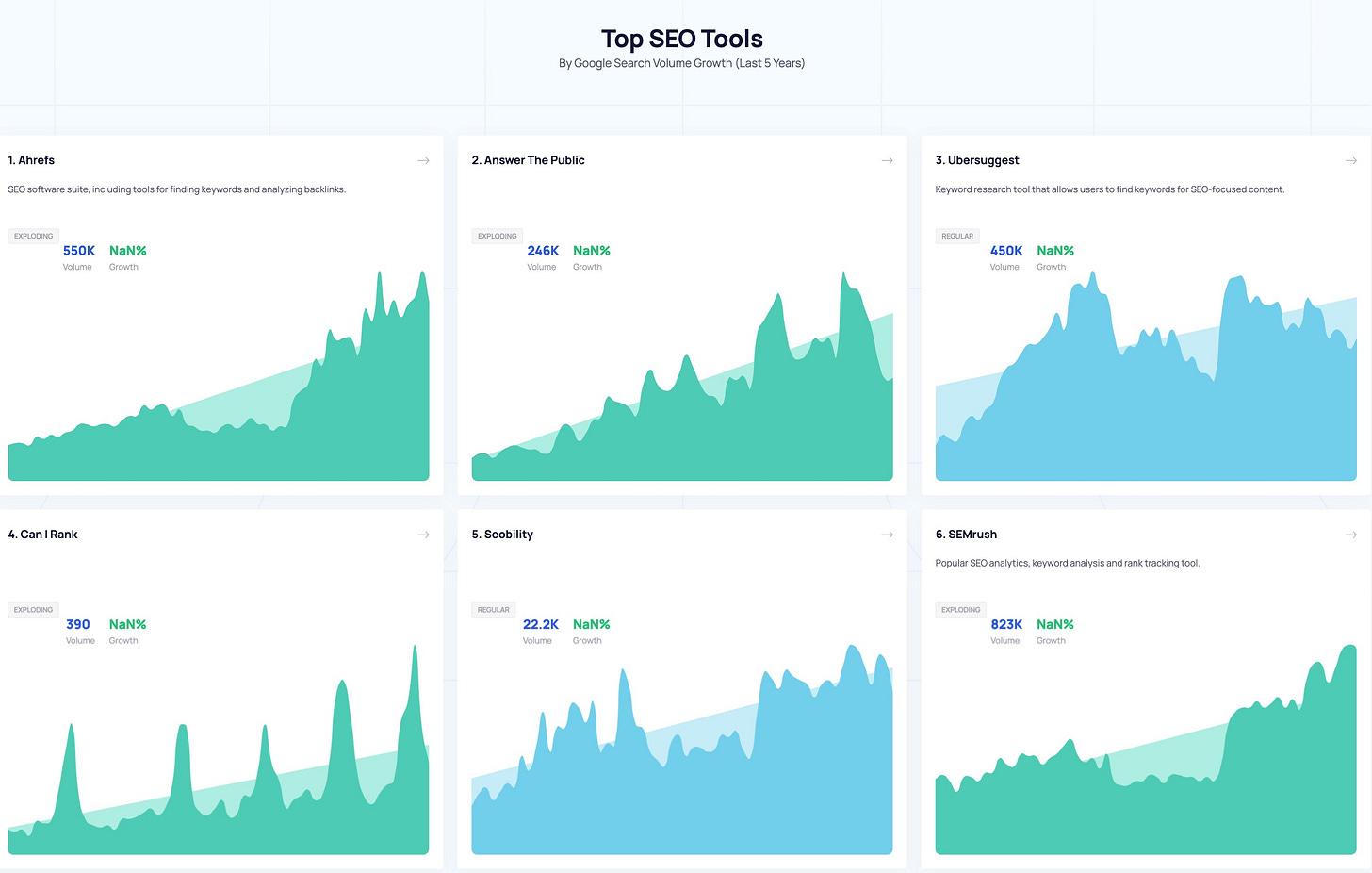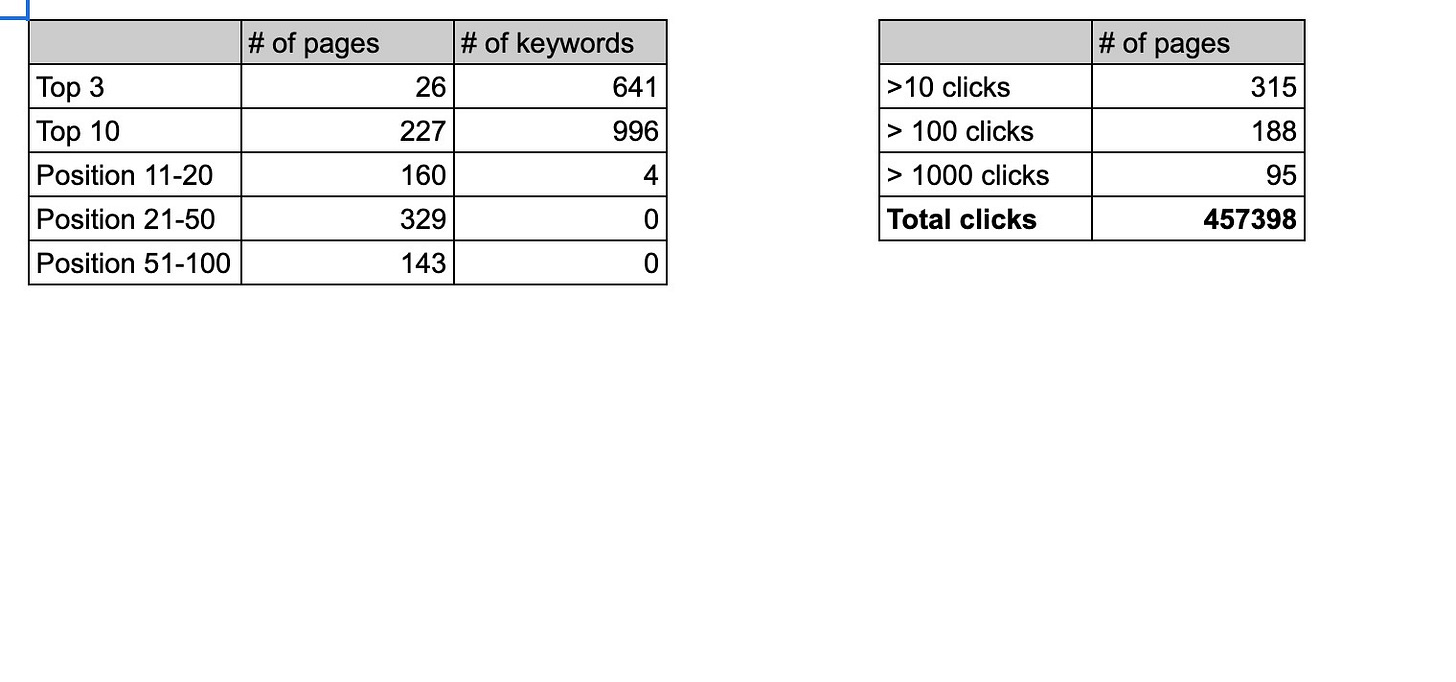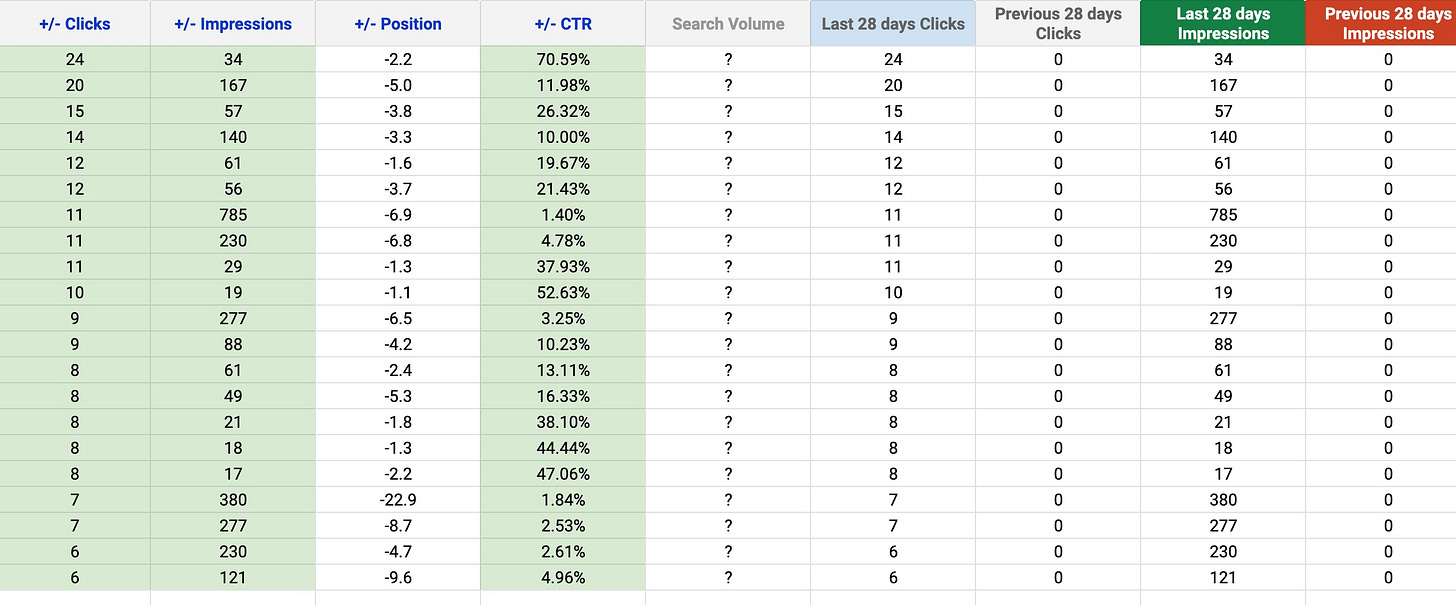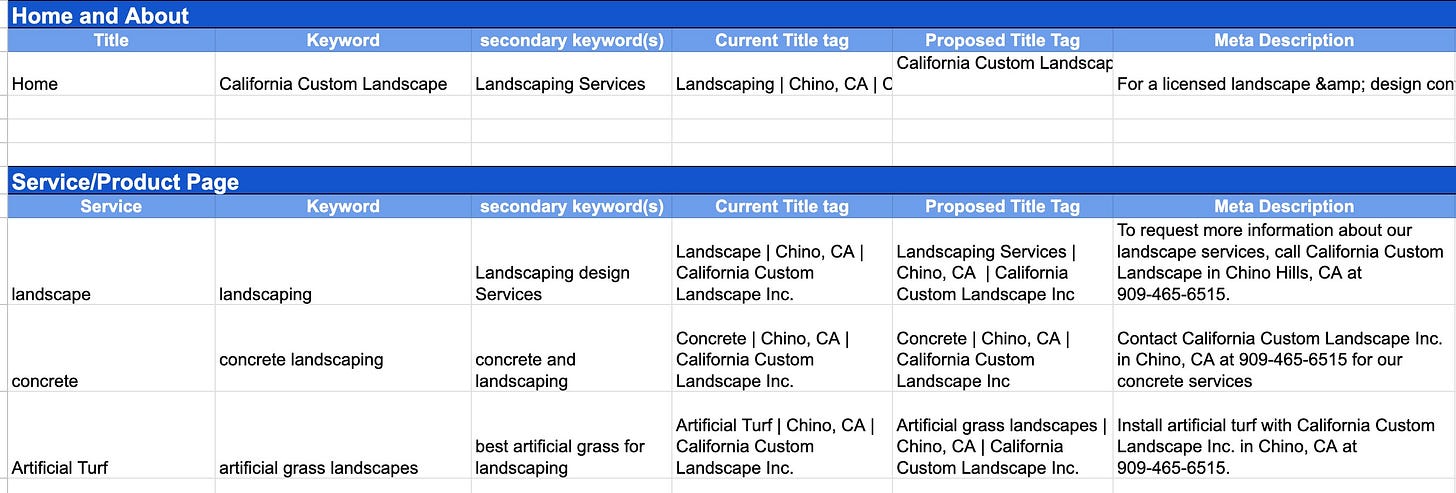SEO Debate: Data-Driven vs. Tool-Dependent
SEO without Data is Like Navigating a Maze Blindfolded; Tools Are Your Torchlight
SEO: Data-Informed vs. Tool-Dependent
1. SEO Tool Dominance
Omnipresence in the industry
You guys are probably aware of this from my live breathe seo youtube channel. I keep saying this “Breathe” before diving into any tool. Every week or month there are new tools coming with new features and pricing. Yes tools have become an integral part of SEO but you see their ubiquity is evident everywhere – from small-scale bloggers trying to carve a niche for themselves to large corporations aiming to dominate search engine results. Remember Tools are proxies and there's a business strategy driving them.
These tools, with their vast array of features, promise insights into website performance, keyword rankings, backlink profiles, and more. Webinars, online courses, and industry conferences frequently highlight the latest features of these tools, further cementing their importance. The rapid adoption and reliance on these tools underscore their perceived value in shaping and driving SEO strategies.
Tools as perceived truth
I've come across several self-proclaimed 'SEOs' in Nepal who place unwavering faith in tools and often challenge my views. Initially, I attempted to clarify my stance to them, but recently, I've stepped back from those debates. Why? It's simply a matter of common sense. Different tools are developed using varied methodologies and programming languages. Recognizing these distinctions should be evident.
While the insights provided by SEO tools are undeniably valuable, a growing concern is the over-reliance on them. Many professionals, especially those new to the field, often treat the data from these tools as the ultimate truth, sidelining other crucial aspects like human intuition, on-ground market insights, and organic user feedback. This perception can be misleading. For instance, a tool might indicate that a particular keyword has high search volume, but it might not provide the context of user intent behind that keyword. Similarly, while tools can highlight technical issues on a website, they might not capture the qualitative user experience or the nuances of brand perception. Relying solely on tools without a holistic understanding can lead to strategies that are data-rich but insight-poor.
2. Beyond Numbers: Data-Informed vs. Data-Driven
“Data-Driven" Pitfalls: Don't Get Trapped!
Hey Hawrry, I noticed my website got a lot of visitors this month, but not many are staying around. Why?" I hear this often. Many SEO experts in Nepal think having lots of visitors is the main goal. But is it? It's great to have many visitors, but understanding the full story behind the traffic is the key.
The allure of being "data-driven" is palpable in the modern digital landscape. The term suggests decisions firmly rooted in numbers, seemingly eliminating ambiguity and subjectivity. However, this approach has its pitfalls. Being strictly data-driven can lead to an over-reliance on quantitative metrics, often at the expense of qualitative insights. For instance, while data might show a surge in website traffic, it might not capture the quality of that traffic or the actual engagement levels of those visitors. There's a risk of becoming too myopic, focusing solely on numbers and missing out on the broader context or the underlying reasons behind those numbers.
True "Data-Informed" essence
The true essence of being 'Data-Informed' is diving deeper, understanding the context, and combining that data with our own insights and experiences.
Data ➡️ Initial Insight ➡️ Personal Interpretation ➡️ Meaningful Results 🌟
Contrary to being purely data-driven, a "data-informed" approach advocates for a more balanced perspective. It emphasizes the importance of using data as a guide while also incorporating human intuition, expertise, and contextual understanding. This approach recognizes that while data provides invaluable insights, it's the human interpretation of that data that brings about actionable and effective strategies. For example, data might indicate a drop in user engagement on a webpage, but it's the human analysis that can discern whether it's due to content quality, page load times, or a shift in user preferences.
"Data as the New Oil": A Dangerous Illusion
The phrase "data is the new oil" has become a popular adage in the business world, highlighting the immense value and potential of data in driving business decisions and innovations. However, just like crude oil needs refining to be useful, raw data requires processing, analysis, and interpretation to derive meaningful insights. Blindly subscribing to this notion without understanding the nuances can lead to misinformed strategies. Raw data, without proper analysis, can be misleading. Moreover, an overemphasis on data can sometimes overshadow other vital aspects of business, such as building genuine customer relationships, understanding market nuances, or fostering brand loyalty.
3. Marrying Data with Intuition
When Data Meets Human Touch
While each set of data and every scenario is unique, the real challenge lies not just in analyzing the data but in making informed decisions based on it. Can you interpret the data and recommend actionable changes? This is where critical thinking and experience become invaluable. Veteran SEO professionals bring a wealth of hands-on experience from various niches and demographics. While they might not be as adept in emerging AI technologies as newer entrants to the field, their extensive analysis of countless websites gives them a deeper grasp of data. Whether you agree or not, their hands-on experience often surpasses those just starting out in the field.
Data provides a foundation—a starting point that offers tangible metrics and insights. However, raw data, in isolation, often lacks context. This is where human intuition comes into play. Intuition, shaped by experience, expertise, and understanding, adds depth and dimension to the data. For instance, while data can highlight a trend, intuition can often discern the 'why' behind that trend. It's this synergy between data and intuition that creates a holistic strategy. By marrying the quantitative strength of data with the qualitative insights of human intuition, SEO professionals can craft strategies that are both informed and insightful.
SEO: Not Just About Numbers, But Experience Too
Experience in the SEO world is invaluable. It's not just about understanding algorithms or knowing the right tools; it's about recognizing patterns, anticipating shifts, and having a deep-rooted understanding of user behaviors and preferences. An experienced SEO professional can often discern nuances that might be overlooked by those new to the field. For instance, while a newcomer might focus solely on keyword rankings, a seasoned professional would understand the importance of user intent, content relevance, and the ever-evolving nature of search algorithms. Experience equips professionals with a unique blend of knowledge and intuition, allowing them to navigate the complexities of SEO with finesse.
Adopting the right approach
Search Engine Keeps evolving, there's no one-size-fits-all strategy. What works for one website or industry might not necessarily work for another. This is why adopting the right approach is crucial. Being data-informed means being adaptable, agile, and always willing to learn. It's about continuously refining strategies based on new data, insights, and industry shifts. It involves a balance of proactive planning and reactive adjustments. For instance, while historical data might inform the initial strategy, real-time analytics and feedback would shape its ongoing refinement. Adopting the right approach means being data-informed but not data-blinded, ensuring that strategies are not only data-backed but also aligned with overarching business goals and user needs.
4. Tool Obsession: A Slippery Slope
Newbies Beware: Tool Dependency Syndrome
The SEO landscape is constantly evolving, and it can be difficult for newcomers to keep up. There are a plethora of tools available, each promising to be the key to SEO success. It is easy for new entrants to become overly reliant on these tools, especially when they are not familiar with the basics of SEO.
While SEO tools can be a valuable resource, they should not be used as a substitute for knowledge and experience.
An over-dependence on tools can lead to a number of problems, including:
Lack of foundational SEO knowledge
SEO tools can provide valuable insights into keyword research, backlink analysis, and other areas of SEO. However, they cannot replace the need for a fundamental understanding of how search engines work. Without this knowledge, it is difficult to interpret the data that tools provide and make informed decisions about SEO strategy.
Superficial grasp of SEO
Relying solely on tools can lead to a superficial understanding of SEO. This can result in the neglect of important factors such as organic strategies, user experience, and content quality.
Inability to troubleshoot problems
When things go wrong, it can be difficult to troubleshoot problems if you are not familiar with the basics of SEO. Tools can provide some guidance, but they cannot replace the need for human expertise.
Cutting Through the Tool Hype
The digital marketing world is rife with tool propaganda. From aggressive marketing campaigns to sponsored content, there's a constant push to adopt the latest and greatest tools. While many of these tools are indeed valuable, the danger lies in perceiving them as the ultimate solution to all SEO challenges. This perception can lead professionals to prioritize tool outputs over organic strategies or to invest in tools without fully understanding their relevance to specific business needs. It's essential to recognize that tools are facilitators, not replacements for human expertise and judgment. Not all tools are created equal, and some may be more hype than substance.
Things to keep in mind when choosing SEO tools
What are your specific needs? What are you trying to achieve with SEO? Once you know your goals, you can start to narrow down your choices.
Do your research. Read reviews and compare features before making a decision.
Consider your budget. SEO tools can range in price from free to hundreds of dollars per month.
Don't be afraid to ask for help. If you're not sure which tool is right for you, talk to an SEO expert.
Overseeing Google tools' potential
SEOs are Often overshadowed by third-party tools. Google's suite of tools, including Google Analytics, Google Search Console, and Google Trends, offers a wealth of untapped potential. These tools provide direct insights from the world's leading search engine, making them invaluable for genuine, organic SEO strategies.
For instance, Google Search Console can offer insights into website performance, keyword rankings, and user behavior, often with more accuracy than third-party tools. Moreover, these tools are free, making them accessible to businesses of all sizes. Recognizing and harnessing the potential of Google's tools can lead to more informed, cost-effective, and organic SEO strategies.
Some of the most important Google SEO tools include
Google Analytics: Google Analytics is a powerful tool that can help you track website traffic, identify your target audience, and measure the effectiveness of your SEO efforts.
Google Search Console: Google Search Console is a tool that helps you track your website's performance in Google Search, identify errors, and fix problems.
Google Trends: Google Trends is a tool that can help you track the popularity of search terms over time. This information can be used to identify high-traffic keywords for your website.
Google Keyword Planner: Google Keyword Planner is a tool that can help you find keywords that are relevant to your business and that have the potential to drive traffic to your website.
Google Lighthouse: Google Lighthouse is a tool that can help you improve the performance, accessibility, and SEO of your website.
5. Strategy vs. Tactics
Allure of quick-win tactics
In Digital marketing, there's a natural inclination towards tactics that promise immediate results. These quick-win tactics, such as a viral social media post or a trending keyword campaign, can offer a temporary boost in traffic or engagement. They are attractive because they provide instant gratification, a sudden spike in metrics that can be exhilarating. However, the challenge with these tactics is their transient nature. While they might lead to a short-term surge, they often lack sustainability. Without a broader strategy in place, the impact of these tactics can quickly wane, leading to inconsistent results and potential long-term stagnation.
Solid strategy's importance
Crafting a strategy takes time and can be boring, but staying firm and investing time in it brings more benefits than drawbacks.
While tactics address immediate challenges, a strategy focuses on long-term goals and sustainability. A solid SEO strategy considers the bigger picture, encompassing everything from brand positioning and target audience analysis to content planning and technical optimization. It's a roadmap that guides all SEO efforts, ensuring consistency, coherence, and alignment with overarching business objectives. A well-defined strategy acts as a foundation upon which various tactics can be implemented, ensuring that each tactic aligns with the broader goals and contributes to sustainable growth. In essence, while tactics might win battles, it's the strategy that wins the war.
Sun Tzu's Wisdom: Tactics Without Strategy is Noise
The ancient Chinese military strategist Sun Tzu once said, "Tactics without strategy is the noise before defeat." This timeless wisdom underscores the importance of a well-thought-out strategy in any endeavor, including SEO. It's a reminder that while individual tactics can offer short-term gains, they are futile without a guiding strategy. In the context of SEO, it emphasizes the need to look beyond immediate results and focus on long-term success. It's about understanding the landscape, anticipating challenges, and crafting a strategy that not only addresses current needs but also positions for future opportunities.
6. Crafting Success: Between Doing & Dreaming
Tool Limitations in Crafting Content Plans
SEO tools can be a valuable resource for crafting content plans. They can provide data on keyword search volume, competition, and other factors that can help you create content that is relevant and discoverable. However, it is important to be aware of the limitations of these tools.
One limitation of SEO tools is that they cannot fully replicate human intuition. When it comes to crafting content, there is often an element of creativity and judgment that cannot be automated.
Another limitation of SEO tools is that they lack contextual understanding. They do not understand the nuances of your industry or the specific challenges and goals of your business. This means that they may not be able to provide you with the most accurate or helpful insights.
SEO tools are constantly evolving. As the search landscape changes, so too do the algorithms that these tools use. This means that the data they provide can quickly become outdated.
From Insights to Action: The Execution
Data and insights, no matter how valuable, are futile without effective execution. Execution is the bridge between insights and tangible results. It's about taking the data-informed strategies and implementing them in a manner that aligns with the business's objectives. For instance, insights might suggest a shift in user preferences, but it's the execution – be it content creation, technical optimization, or user experience enhancement – that materializes these insights into actionable outcomes. Effective execution ensures that strategies are not just theoretical but lead to measurable improvements in website performance, user engagement, and overall SEO success.
Seeing the Unseen: The Power of Abstraction
In the world of SEO, it's easy to get bogged down by the minutiae – the specific keywords, the exact bounce rates, the intricate backlink profiles. However, true success often lies in the ability to abstract, to look beyond the immediate data and see the bigger picture. Abstraction involves understanding overarching trends, recognizing patterns, and anticipating future shifts. It's about not just reacting to the current data but also proactively strategizing for future scenarios.
In SEO, abstraction can be used to:
Understand overarching trends in search behavior.
Recognize patterns in keyword performance.
Anticipate future shifts in the search landscape.
For example, let's say you're an SEO for a furniture store. You might be tracking the following data:
The number of keywords your website ranks for.
The average bounce rate for your website.
The number of backlinks your website has.
This data is all important, but it doesn't tell the whole story. To get a better understanding of your SEO performance, you need to abstract the data. This means looking for patterns and connections that are not immediately obvious.
For example, you might notice that the number of keywords your website ranks for has been declining over the past few months. This could be a sign that your competitors are doing a better job of optimizing their websites for search.
Or, you might notice that the average bounce rate for your website has been increasing. This could be a sign that your website is not meeting the needs of your visitors.
By abstracting the data, you can get a better understanding of your SEO performance and make informed decisions about how to improve it.
Abstraction is also important for anticipating future shifts in the search landscape. Just a while back google SGE was not there, now it's here and we are seeing its impact on website traffic, SERP. For example - after SGE informational queries have less scope so you need to start thinking about how you can address people in the middle of the funnel or bottom of the funnel.
By abstracting the data and understanding the bigger picture, you can make sure that your SEO strategy is forward-looking and adaptable. This will help you stay ahead of the competition and ensure that your website remains visible in search results.
7. Content Decay Insights
Content Decay: The Silent SEO Killer
Content decay refers to the gradual decline in the performance of a piece of content over time. This can manifest as reduced traffic, lower search rankings, or decreased user engagement. The significance of content decay lies in its impact on a website's overall SEO health. As content ages, it may become outdated, less relevant, or overshadowed by newer, more current pieces. Ignoring content decay can lead to a gradual erosion of a website's authority, relevance, and visibility in search engine results. Addressing content decay is not just about maintaining current performance levels but also about capitalizing on opportunities to refresh, update, and improve existing content to drive better results.
A 360° Strategy to Combat Content Decay
Addressing content decay requires a holistic approach that goes beyond mere updates. It's about understanding the root causes of the decay, whether it's changing user preferences, evolving industry trends, or shifts in search algorithms. A holistic approach involves:
Content Audits: Regularly reviewing content to identify pieces that are underperforming or outdated.
Prioritize your content: Focus on refreshing and updating the most important pieces of content first.
Refreshing content: This can involve updating the information in a piece of content, adding new sections, or changing the structure.
Updating keywords: If the keywords that a piece of content is targeting are no longer relevant, they should be updated. (NLP friendly keywords)
Improving SEO: This can involve making sure that the title tag and meta description are optimized for search engines.
Promoting content: This can involve sharing it on social media, submitting it to directories, or guest blogging on other websites.
Use a content calendar: This will help you stay on top of your content updates.
User Feedback: Gathering feedback from users to understand what aspects of the content might be lacking or irrelevant.
Competitive Analysis: Reviewing competitors' content to identify gaps or opportunities for improvement.
Technical Checks: Ensuring that technical aspects, such as page load times, mobile optimization, and internal linking, are optimized.
By addressing content decay from multiple angles, businesses can ensure that their content remains relevant, valuable, and optimized for both search engines and users.
Merging Decay Insights into Business Blueprints
Successfully tackling content decay involves integrating insights from various sources. This means combining data from SEO tools, user feedback, and industry trends to inform content updates and strategies. For instance, while an SEO tool might highlight declining traffic to a specific page, user feedback might provide insights into why users are no longer finding the content valuable. Similarly, industry trends might suggest new topics or angles that can be incorporated into the content. Integrating these insights ensures that content updates are not just reactive but also proactive, anticipating and addressing both current and future challenges.
8. Striking Gold: Balancing Data, Tools & Strategy
Beyond Data & Tools: The Bigger Picture
Data and tools have revolutionized the SEO landscape, offering unprecedented insights and capabilities. However, it is essential to recognize their inherent limitations.
Data, in its raw form, is just a collection of facts and figures. Without proper interpretation, context, and application, it can lead to misguided strategies. For example, a piece of data may show that a certain keyword is trending. However, without understanding why the keyword is trending and who is searching for it, it is difficult to develop a successful SEO strategy.
Similarly, tools, no matter how advanced, cannot replace the nuanced understanding, intuition, and expertise of a seasoned SEO professional. They can facilitate the process, but they cannot replicate the human touch. For example, a tool may be able to identify backlinks to a website. However, it cannot understand the quality of those backlinks or how they impact the website's ranking.
Recognizing these limitations ensures that data and tools are used effectively, complementing rather than overshadowing human judgment.
Tips for using data and tools effectively:
Interpret data correctly: Don't just look at the numbers. Understand what the data is telling you and how it can be applied to your SEO strategy.
Consider the context: Don't look at data in isolation. Look at it in the context of your industry, your target audience, and your business goals.
Use tools wisely: Don't rely on tools blindly. Use them to supplement your own knowledge and intuition.
Get help from experts: If you're not sure how to use data and tools effectively, get help from an SEO expert.
Be creative: Don't be afraid to experiment with new ideas and approaches. The best SEO strategies are often the ones that are most creative.
Be patient: SEO is a long-term game. Don't expect to see results overnight.
Be persistent: Don't give up if you don't see results immediately. Keep working hard and you will eventually achieve your goals.
Coding vs. Strategy: Know the Difference
In the digital age, there is a misconception that knowing how to code or having technical expertise is synonymous with SEO success. While technical proficiency is undoubtedly valuable, especially in areas like website optimization and algorithm understanding, it is just one facet of SEO. Strategic insights, which encompass understanding user behavior, market trends, content relevance, and brand positioning, are equally, if not more, crucial.
A well-coded website might rank well, but without strategic content and user-centric design, it might not engage or convert users effectively. It's the marriage of coding prowess and strategic insights that drives true SEO success.
Coding vs. Strategy
Coding
Focuses on the technical aspects of SEO, such as website structure, HTML, and CSS.
Can help to improve a website's ranking in search engines.
Requires specialized knowledge and skills.
Strategy
Focuses on the user experience, such as content, design, and marketing.
Can help to attract and retain visitors to a website.
Requires a deep understanding of the target audience and the market.
Importance of Both Coding and Strategy
Both coding and strategy are important for SEO success. However, they are not mutually exclusive. In fact, they are complementary. A good SEO strategy will take into account the technical aspects of SEO, and a good SEO campaign will be implemented by someone with the technical skills to do so.
Tips for combining coding and strategy in SEO:
Hire a team of experts with both coding and strategy skills.
Invest in SEO tools and software that can help you track your progress and measure your results.
Stay up-to-date on the latest SEO trends and best practices.
Be patient and persistent. SEO is a long-term game.
The best SEO campaigns combine coding and strategy: The best SEO campaigns are those that combine the technical expertise of coding with the strategic insights of marketing.
Irony is even when merging coding with strategy, there are certain aspects you should always remember.
When it comes to SEO
Coding is not enough: A well-coded website is not enough to guarantee SEO success.
Strategy is not enough: A good strategy is not enough to guarantee SEO success.
The Symphony of Strategy & Tactics in SEO
The essence of effective SEO lies in harmony—a balance between data and intuition, tools and expertise, technical proficiency and strategic insights. It's about recognizing that while modern tools and data analytics offer powerful capabilities, they are most effective when used in tandem with human expertise and judgment. Harmony in SEO means leveraging the strengths of both data-driven insights and human intuition to craft strategies that are not only effective but also sustainable. It's about understanding that SEO is not a one-size-fits-all solution, but a nuanced discipline that requires a harmonious blend of various elements to truly succeed.
Author : Hawrry Bhattarai













